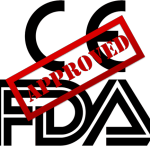The “regulatory affairs” section comprises over 200 tasks that need to be completed during the development and approval of medical devices.
Here, you will find an overview of the most essential content so that you can get your device approved quickly.
Content
On this page, you will find articles on the following topics:
- What regulatory affairs is
- Regulatory requirements
- Authorization and documentation
- Authorities, institutions, and associations
- Further topics of regulatory affairs
1. What regulatory affairs is
Regulatory affairs comprises the processes and activities that ensure that medical devices meet the regulatory requirements of the countries where they are sold. This includes
- obtaining the necessary approvals from the regulatory authorities,
- compliance with applicable regulations and standards, and
- maintaining conformity throughout the entire product life cycle until decommissioning.
The tasks of regulatory affairs also include monitoring changes to regulations and standards and communicating these changes to stakeholders within the company to ensure continuous compliance.
Regulatory affairs thus plays a crucial role in ensuring that medical devices are safe, effective, and comply with legal requirements.
Further information
Refer also to the article on regulatory affairs managers’ tasks, competencies, and earning potential. This includes the task of developing a regulatory strategy.
2. Regulatory requirements
a) Germany
| Laws |
Medical Devices Law (no longer valid)
Medical Devices Implementation Act MPDG |
| National regulations |
Medical Device Operator Ordinance (Medizinprodukte-Betreiberverordnung – MPBetreibV)
Medical Device User Notification and Information Ordinance (Medizinprodukte-Anwendermelde- und Informationsverordnung – MPAMIV) |
b) Europe
c) USA
d) Other markets
3. Approval and documentation
a) Approval
Find more information on international approval
b) Qualification and classification (How should my device be classified?)
c) Technical documentation (What do I need to document for each device?)
d) Quality management (What should your company fulfill?)
Quality management is not usually the responsibility of regulatory affairs. Nevertheless, we have listed some important articles for you.
e) Regulatory Roles
There are several expert articles on regulatory roles:
4. Authorities, institutions, and associations
a) Germany
b) Europe
c) International
| IMDRF: International Medical Device Regulators Forum |
5. Regulatory affairs: Further topics
The tasks of Regulatory Affairs also include finding and eliminating deviations and non-conformities. The (emergency) elimination is called remediation.
Note the advantages and disadvantages of Regulatory Information Management Systems (RIMS) and their role in manufacturers’ digital transformation.
Part of the tasks of regulatory affairs is regulatory intelligence.
Do you need support?
Do you still have questions, for example, about the approval of your devices? Then, take advantage of our free micro-consulting service.
If you would like support in developing and “approving” your medical devices in compliance with the law, contact us right away. The Johner Institute team will be happy to help!
The Medical Device Coordination Group (MDCG) is an expert panel required by the MDR and IVDR. The MDCG is sometimes confused with another coordination group or with expert panels. You can find out how these groups are differentiated here. Read this article to find out how you are affected by the output of the MDCG’s…
Details
Regulators still publish laws and regulations as texts. Just as it has been for thousands of years. Regulation as Code represents a radical paradigm shift away from this practice. Is it possible to transform laws into algorithms? Why should anyone want to do this? How should you get ready for this as a regulator, manufacturer, authority, or…
Details
Decision Support Systems are also increasingly being used in medicine. If they are medical devices, they must meet the legal requirements (e.g., the general safety and performance requirements). The hype surrounding Artificial Intelligence, in particular Machine Learning, and users such as Watson are raising hopes for the performance of Decision Support Systems. This article presents…
Details
From 2017-2022 the FDA offered a “Precertification (Pre-Cert) Pilot Program” to specific companies for standalone software to simplify and accelerate the approval process for digital health devices. This article summarizes the most important aspects and provides a quick overview.
Details
If manufacturers don’t conduct a legally compliant performance evaluation of their in vitro diagnostic medical device (IVD), they aren’t just running the risk of problems during the authorization process: They are risking patient safety. Therefore, the IVDR sets strict requirements for this performance evaluation. Find out how the requirements of the IVDR for the performance…
Details
If a medical device does not (or no longer) meets the FDA’s requirements, manufacturers, distributors, and importers must recall it. This applies in particular if the device presents a hazard. In this article you will learn,
Details
Cytotoxicity testing can be used to test a sample to determine how much it can damage, or even cause the death of, human cells. Standards and legislation require manufacturers to demonstrate that their devices are not cytotoxic. With a good test setup, it is possible to detect whether a sample is 100% cytotoxic, i.e., highly cytotoxic, or…
Details
The 510(k), also known as “Premarket Notification”, is one of the most common procedures for the authorization of medical devices in the USA. The concept is based on demonstrating equivalence with a predicate device (equivalent device). But the same mistakes, which can result in the entire 510(k) authorization failing, are made time and again. It…
Details
Post-Market Surveillance (PMS) is a proactive and systematic process to derive necessary corrective and preventive actions (CAPA) from information about medical devices already placed on the market. We have created a Post-Market Surveillance checklist for you. With this checklist, you can find out whether you meet the regulatory requirements of the MDR for Post-Market Surveillance…
Details
Currently, manufacturers of legacy devices can keep their devices on the market without demonstrating conformity under Regulation 2017/745 on Medical Devices (MDR). However, manufacturers will have to provide the necessary clinical data by the end of the transition period at the latest. The requirements for clinical data that can be used to demonstrate conformity have increased enormously under the MDR. Furthermore,…
Details
